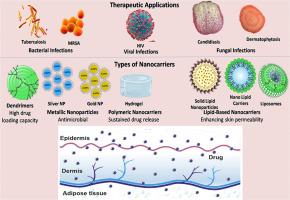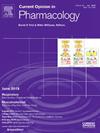Nanotechnology-enhanced transdermal systems for infectious diseases
IF 4.2
3区 医学
Q1 PHARMACOLOGY & PHARMACY
引用次数: 0
Abstract
Nanotechnology-enhanced transdermal drug delivery systems (NETS) show great potential in treating infectious diseases by improving drug penetration, stability, and bioavailability. Unlike traditional methods, NETS overcome skin barrier limitations through the use of lipid-based, polymeric nanoparticles, and dendrimers, enabling efficient drug transport and controlled release. This results in enhanced therapeutic efficacy and reduced systemic side effects for bacterial, viral, and fungal infections. However, challenges related to toxicity, stability, and regulatory hurdles remain. This paper examines the mechanisms, advantages, and limitations of NETS, while highlighting promising future research opportunities and clinical applications in combating infectious diseases.

纳米技术增强的传染病透皮系统
纳米技术增强的经皮给药系统(NETS)通过改善药物渗透、稳定性和生物利用度,在治疗传染病方面显示出巨大的潜力。与传统方法不同,NETS通过使用基于脂质、聚合纳米颗粒和树突状大分子,克服了皮肤屏障的限制,实现了有效的药物运输和控制释放。这提高了治疗效果,减少了对细菌、病毒和真菌感染的全身副作用。然而,与毒性、稳定性和监管障碍相关的挑战仍然存在。本文探讨了网络的机制、优势和局限性,同时强调了未来在防治传染病方面的研究机会和临床应用。
本文章由计算机程序翻译,如有差异,请以英文原文为准。
求助全文
约1分钟内获得全文
求助全文
来源期刊
CiteScore
8.80
自引率
2.50%
发文量
131
审稿时长
4-8 weeks
期刊介绍:
Current Opinion in Pharmacology (COPHAR) publishes authoritative, comprehensive, and systematic reviews. COPHAR helps specialists keep up to date with a clear and readable synthesis on current advances in pharmacology and drug discovery. Expert authors annotate the most interesting papers from the expanding volume of information published today, saving valuable time and giving the reader insight on areas of importance.

 求助内容:
求助内容: 应助结果提醒方式:
应助结果提醒方式:


